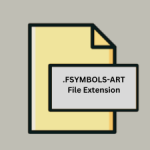.INT File Extension

SGI Integer Image
| Developer | Silicon Graphics |
| Popularity | |
| Category | Raster Image Files |
| Format | .INT |
| Cross Platform | Update Soon |
What is an INT file?
.INT file extension represents SGI Integer Image files, a format primarily associated with Silicon Graphics, Inc. (SGI) workstations.
These files store raster graphics using integer values to represent pixel data, a method particularly useful in graphics-intensive applications and environments.
SGI Integer Image files are notable for their use in high-performance computing and visualization tasks.
More Information.
SGI introduced the .INT file format during the era when computer graphics were evolving rapidly.
The format was intended to provide a robust means of storing and manipulating raster images, particularly in environments where precision and performance were critical.
The primary purpose of the .INT file format was to support applications requiring high-quality image rendering, such as 3D modeling, scientific visualization, and digital content creation.
SGI workstations, known for their powerful graphics capabilities, utilized the .INT file format to handle integer-based image data efficiently.
This allowed users to perform complex image processing operations with high precision and speed, a significant advantage in industries relying on detailed graphical representations.
Origin Of This File.
The .INT file extension traces its roots back to Silicon Graphics, Inc., a company known for its advanced graphics workstations and servers.
SGI played a pivotal role in the development of high-end graphical computing and visualization, influencing various industries including film, science, and engineering.
The .INT file format was part of SGI’s suite of tools designed to handle complex graphics and image processing tasks.
File Structure Technical Specification.
The .INT file format employs a straightforward structure designed to store integer pixel data. Here is an overview of its technical specifications:
- Header: The file begins with a header section that contains metadata about the image. This includes information such as the image width, height, number of channels, and data format.
- Pixel Data: Following the header, the pixel data is stored. Each pixel is represented by integer values, which can vary depending on the image’s color depth and number of channels (e.g., RGB or grayscale).
- Channel Information: The format supports multiple channels, allowing for complex images with various color components or other data layers.
- Data Compression: Some implementations of the .INT format may include optional compression to reduce file size, though this is less common given the format’s focus on performance.
Technical Specifications
- File Extension: .INT
- Data Encoding: Integer values for pixel representation
- Supported Color Depth: Typically 8-bit or 16-bit per channel
- Compression: Optional, varies by implementation
- Common Uses: 3D modeling, scientific visualization, high-performance graphics applications
How to Convert the File?
Converting ‘.INT files’ to other formats can be necessary for compatibility or optimization purposes. Here are common methods:
- Using Image Editing Software: Applications like Adobe Photoshop, GIMP, or ImageMagick support importing ‘.INT files’ and exporting them into popular formats like JPEG, PNG, or TIFF.
- Batch Conversion Tools: Utilize specialized batch conversion tools designed to process multiple ‘.INT files’ into desired formats in bulk, ensuring efficiency in large-scale operations.
Advantages And Disadvantages.
Advantages
- High Precision: The use of integer values for pixel data ensures high precision, crucial for detailed image processing tasks.
- Performance: Designed for high-performance computing environments, the .INT format allows for efficient manipulation and rendering of complex images.
- Flexibility: Supports multiple channels and varying color depths, making it suitable for a wide range of applications.
- Compatibility with SGI Systems: Native compatibility with SGI workstations and software enhances its utility in specialized fields.
Disadvantages
- Limited Support: The .INT format is less widely supported outside of SGI systems, limiting its use in more general computing environments.
- File Size: Without compression, .INT files can be quite large, which may be a drawback for storage and transmission.
- Obsolescence: As SGI systems have become less common, the .INT format is now considered somewhat obsolete, with fewer modern applications supporting it.
How to Open INT?
Open In Windows
- GIMP: Install GIMP and the necessary plugin to open .INT files. Once opened, the file can be edited or converted to another format.
- ImageMagick: Use ImageMagick’s command-line tools to convert the .INT file to a more widely supported format.
Open In Linux
- GIMP: Available for Linux, GIMP with the appropriate plugin can open .INT files.
- ImageMagick: ImageMagick’s tools are often pre-installed on Linux systems and can be used to convert .INT files.
Open In MAC
- GIMP: Similar to Windows, GIMP can be used to open and convert .INT files.
- ImageMagick: Use ImageMagick from the Terminal to handle .INT files.













